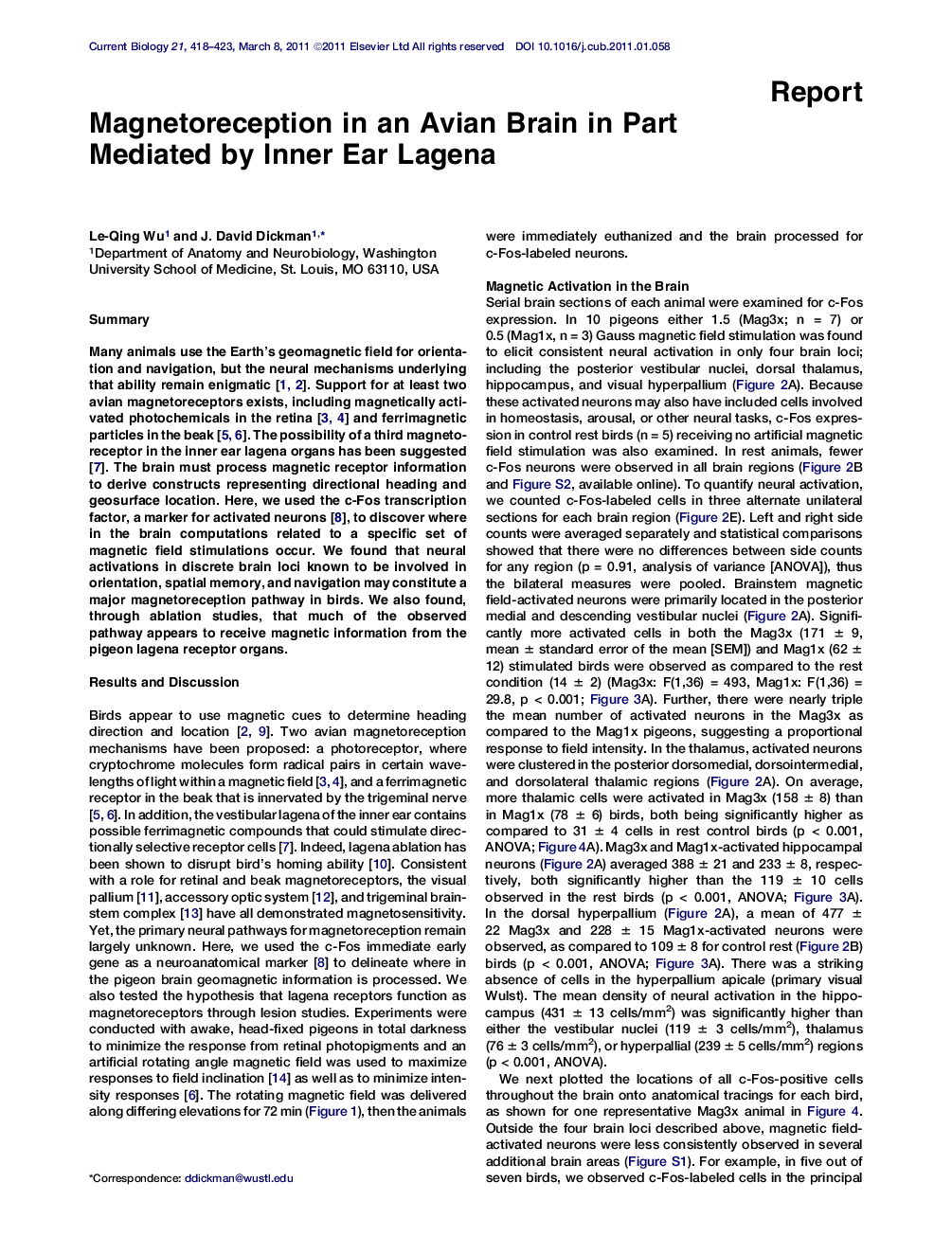| Article ID | Journal | Published Year | Pages | File Type |
|---|---|---|---|---|
| 2043217 | Current Biology | 2011 | 6 Pages |
SummaryMany animals use the Earth's geomagnetic field for orientation and navigation, but the neural mechanisms underlying that ability remain enigmatic [1 and 2]. Support for at least two avian magnetoreceptors exists, including magnetically activated photochemicals in the retina [3 and 4] and ferrimagnetic particles in the beak [5 and 6]. The possibility of a third magnetoreceptor in the inner ear lagena organs has been suggested [7]. The brain must process magnetic receptor information to derive constructs representing directional heading and geosurface location. Here, we used the c-Fos transcription factor, a marker for activated neurons [8], to discover where in the brain computations related to a specific set of magnetic field stimulations occur. We found that neural activations in discrete brain loci known to be involved in orientation, spatial memory, and navigation may constitute a major magnetoreception pathway in birds. We also found, through ablation studies, that much of the observed pathway appears to receive magnetic information from the pigeon lagena receptor organs.
► A putative magnetoreception neural pathway in pigeons was delineated ► Lagena otolith organs in the inner ear serve as magnetoreceptors ► Trigeminal neurons also are involved in magnetoreception ► An additional magnetoreception stream runs through the thalamofugal visual pathway
